CHECK OUT THIS ARTICLE: HOW TO CALCULATE AND INCREASE RESTAURANT PROFIT MARGINS
Share
- Jump to:
The rise of food delivery apps took place long before the COVID-19 pandemic.
Between 2014 and 2016, online food delivery grew 300% faster than dine-in ordering, with experts projecting that online food delivery would soon account for up to 40% of a restaurant’s total revenue.
When COVID-19 forced citizens to stay home and restricted indoor dining, restaurants rapidly embraced online food delivery and leveraged third-party apps to connect with and manage customer orders.
Today, the online food delivery industry boasts an expected annual growth rate of 9.69% with a projected market volume of $96,372 million by 2026.
What does all this mean for restaurants?
Food delivery apps are no longer just a competitive advantage for successful restaurants—they’re a requirement.
However, third-party delivery apps come with steep fees that, if left unchecked, can eat away at a restaurant’s profit margin. Before rushing to join a third-party platform such as Grubhub or DoorDash, you need to understand how much you’ll pay in fees per platform.
Today’s Customers Demand Online Ordering & Delivery Apps
Owning and operating a restaurant now requires a digital-first mindset. Customers expect restaurants to use technology that provides a seamless dining, ordering, and delivery experience.
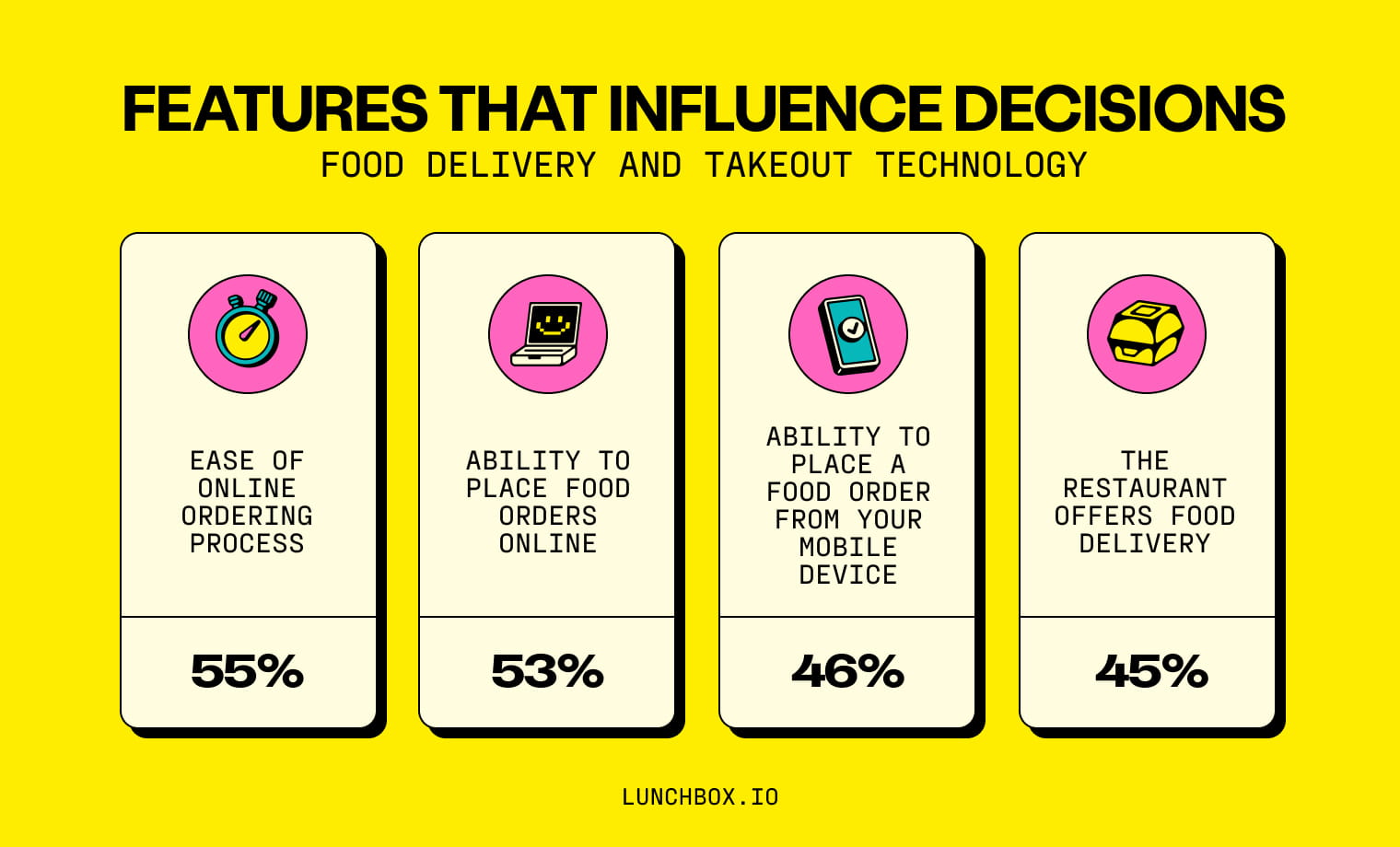
As part of Hospitality Technology’s 2021 Customer Experience Survey, participants were asked about the food delivery and takeout technology features that influence their decision to choose one restaurant over another. Responses included:
Ease of online ordering process: 55% of survey participants.
Ability to place food orders online: 53% of survey participants.
Ability to place a food order from your mobile device: 46% of survey participants.
The restaurant offers food delivery: 45% of survey participants.
With fervent customer expectations for food delivery apps, restaurant owners often turn to third-party apps for a quick delivery service setup. Delivery platforms such as PostMates, Uber Eats, and Grubhub promise restaurants the ability to launch a delivery service in a matter of days, along with:
Built-in delivery driver network and management.
Marketing and promotional opportunities.
Access to thousands of local hungry customers.
Less technological headaches.
If this seems too good to be true, that’s because it is. Delivery apps are notorious for high delivery fees and hidden costs that diminish profits for restaurants and disrupt the customer experience.
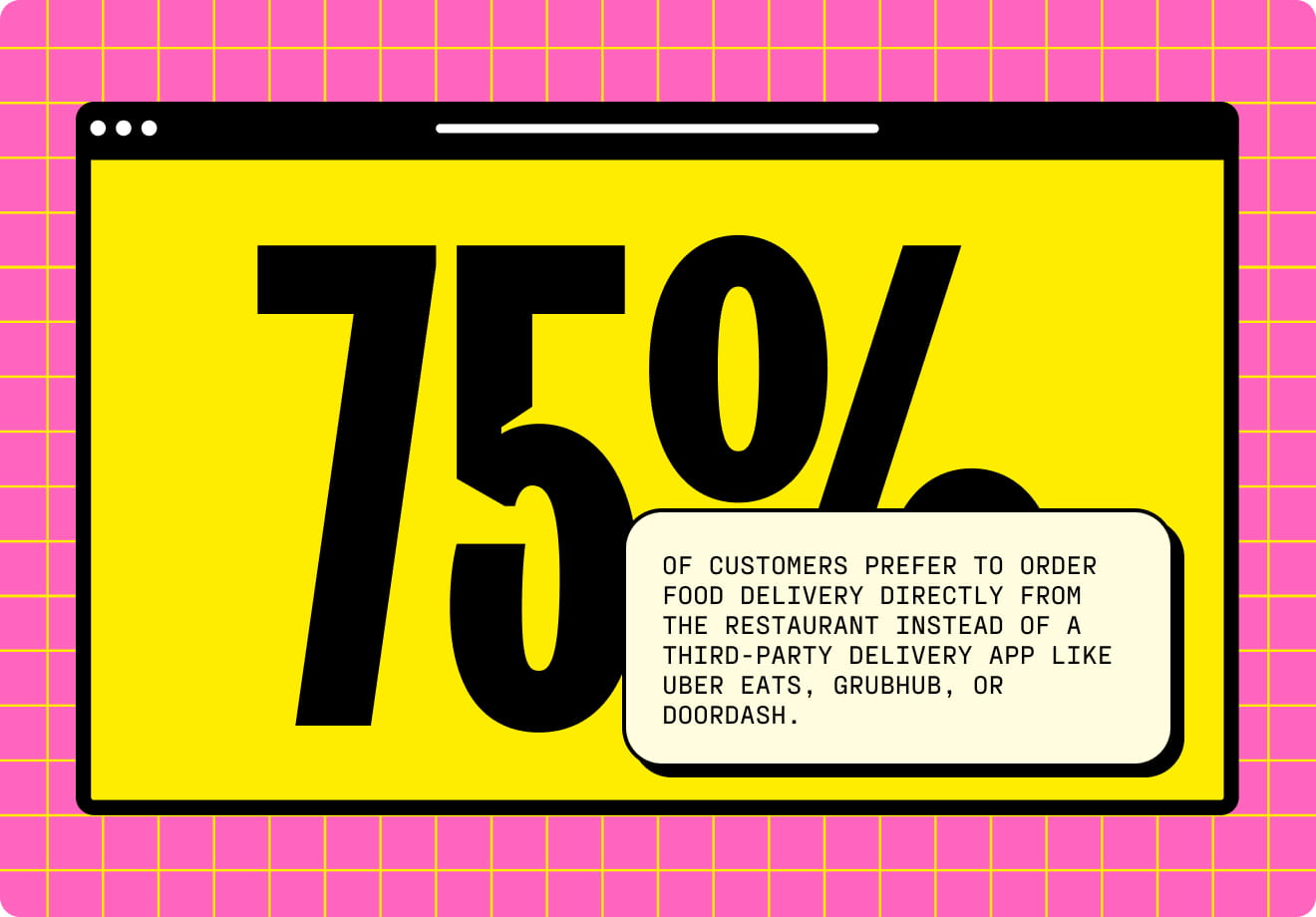
Maybe that’s why Hospitality Technology’s survey also found 75% of customers prefer to order food delivery directly from the restaurant instead of a third-party delivery app like Uber Eats, Grubhub, or DoorDash.
Did you know? First-party orders from Lunchbox are 30% more profitable than third-party delivery app orders.
In 2020, the New York Times reported that delivery orders through popular third-party apps were 25-91% more expensive than if ordered directly from a restaurant. With markups this steep, it’s not difficult to understand why customers and restaurants alike are looking for delivery alternatives.
Food Delivery App Fees Compared
Delivery fees, marketing fees, onboarding fees—third-party delivery platforms charge restaurants a lot of fees.
As restaurants attempt to cover the cost of high commission fees, customers are left to foot the bill. When ordering through a third-party platform, customers are charged everything from delivery fees to minimum order fees—well before a tip is calculated or considered.
Customers end up with expensive meals for the convenience of food delivery.
To help restaurants break the cycle, we’ve compared the delivery fees of the top third-party apps (plus, the cost of owning the ordering process and driving direct orders with a branded delivery app).
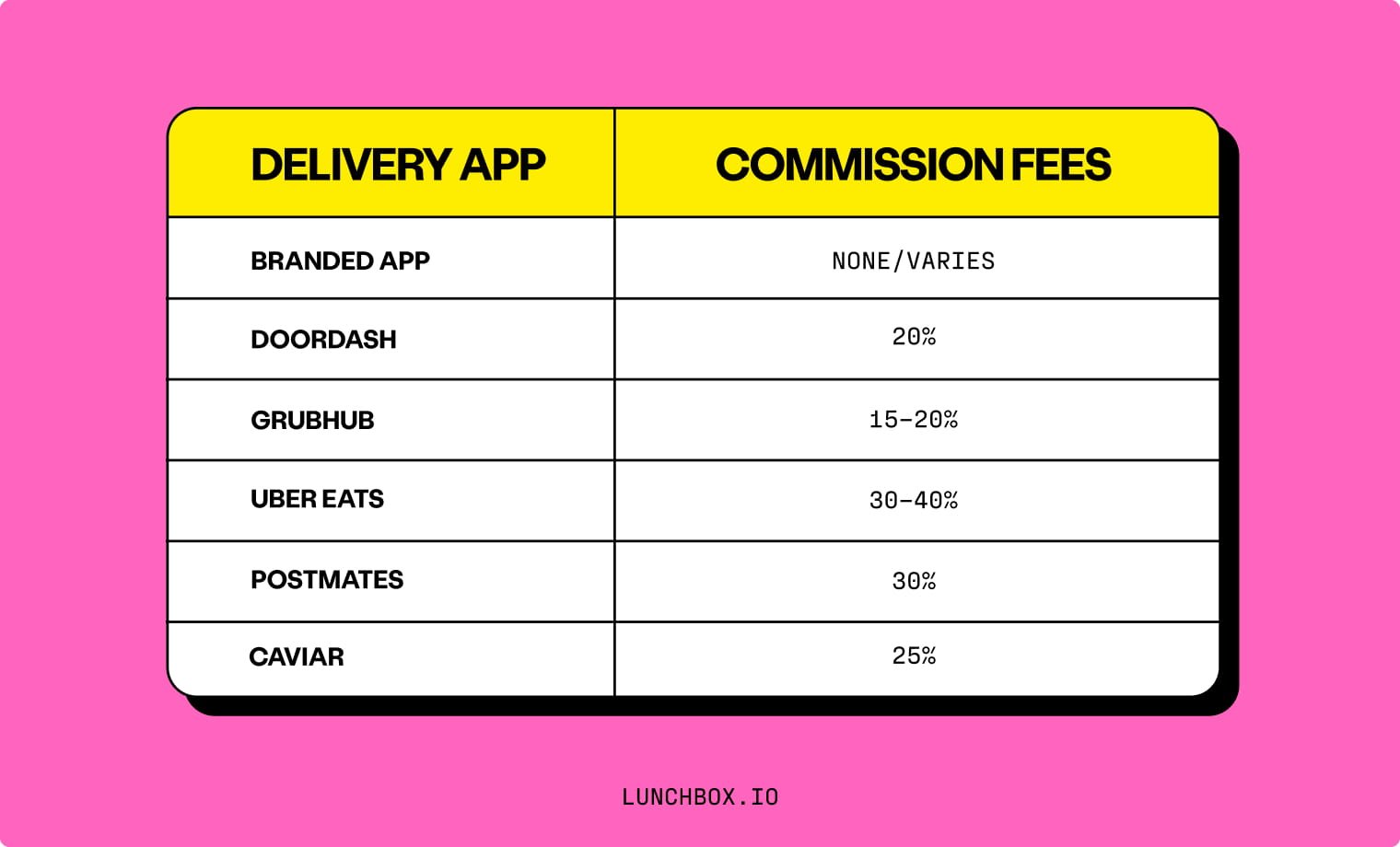
1. Custom branded app: cost varies.
Customers want to order first-party and support local restaurants. But in today’s busy and tech-savvy world, over-the-phone delivery and pickup orders aren’t going to cut it.
Appeal to customers and reclaim delivery order profitability with a custom branded food delivery app.
Building an app for your restaurant offers several advantages:
No more delivery commission fees — When you control every aspect of the delivery process, you control the fees too. Use your own delivery drivers or outsource to a white-label delivery service (DoorDash offers an on-demand service even for restaurants that don’t use the marketplace). The choice is yours. Either way, you won’t owe a third-party service up to 30% of each order!
Complete branding control — Most third-party apps lack branding and customization options, but with a custom mobile app, you have total control over the visual appearance and user experience.
Your app, your way — From loyalty programs to specific menu features, you have the freedom to build a food delivery app that meets the needs of your restaurants and customers.
Costs of creating a custom app will vary based on your restaurant’s needs and the developer you choose to partner with. It’s vital to partner with a team that not only deeply understands the complex restaurant industry, but can also position your app for a successful launch and scale as your business grows.
2. DoorDash: 15-30%.
Platform
In 2013, the founders of what would soon become DoorDash launched “paloaltodelivery.com” after hearing about the trouble with food delivery from a local bakery owner. Fast forward nearly 10 years later and DoorDash is a global delivery app phenomenon, serving food from more than 550,000 restaurants around the world. As of 2021, the company corners 55% of the online food delivery market.
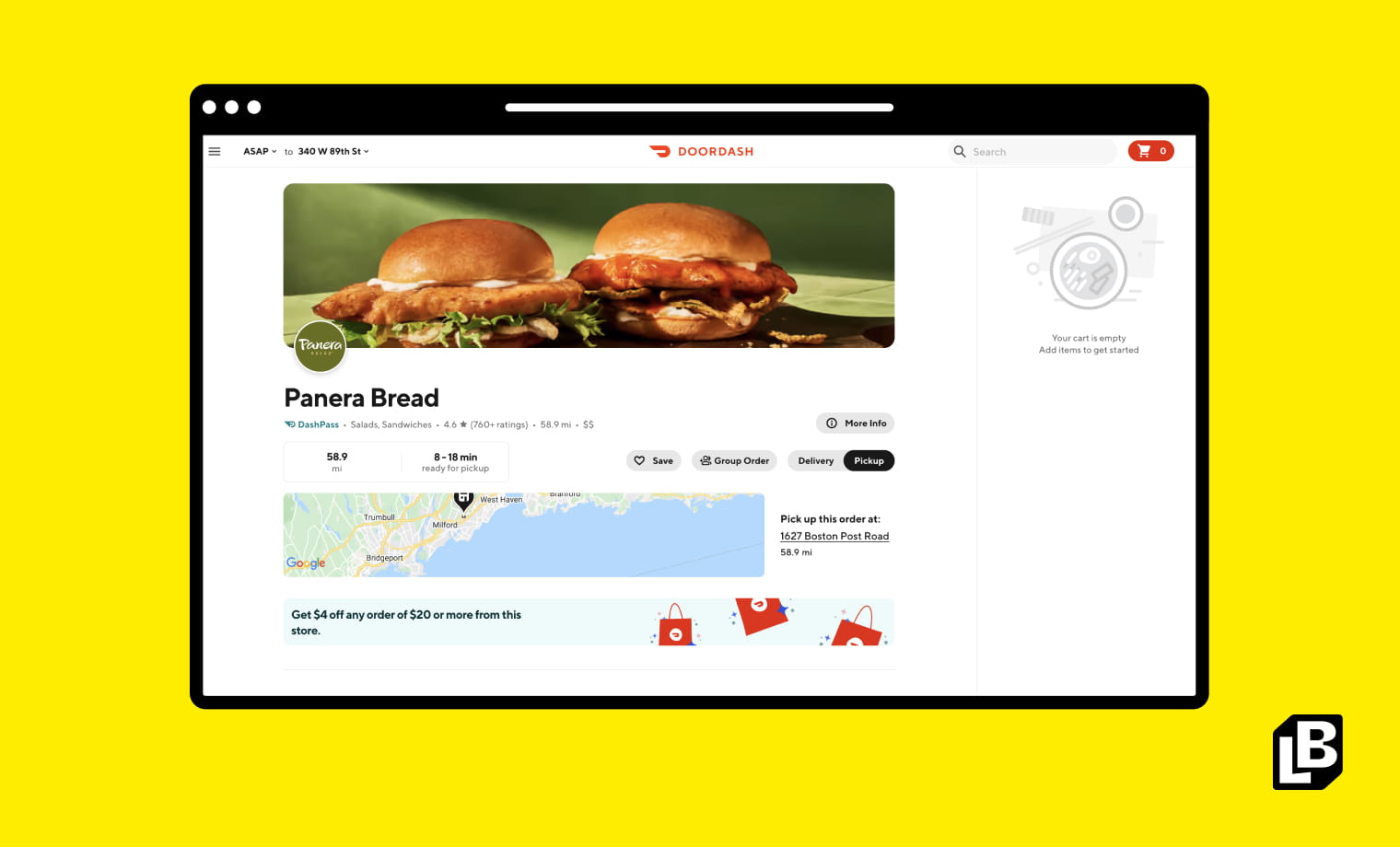
Products
As the food delivery service space became more competitive, DoorDash diversified its product offerings for restaurants.
The company currently offers:
DoorDash App — Restaurants are listed and manage delivery orders through DoorDash’s mobile app network.
DashPass — A subscription service for customers, enabling restaurants to generate sales from top customers and gain local awareness.
Self-Delivery — Access customers on the DoorDash network while managing delivery drivers internally. Requires a 12% commission fee or 8% commission for DashPass deliveries.
Storefront — Online ordering housed on your website and powered by the DoorDash network and technology; 2.9% + 30¢ processing fee applied to each order.
Drive — DoorDash’s white-label delivery fleet. $6.99-$10.99 fee for delivery orders.
Capital — Financing options for restaurants growing their online delivery business.
Licensing — Restaurants can license their brand to DoorDash and expand their reach with DoorDash-operated ghost kitchen operations in Redwood City and San Jose, California.
Membership Pricing
DoorDash offers 3 different membership plans:
Basic — 15% delivery commission, 6% pickup commission. DashPass not included. Limited delivery area.
Plus — 25% delivery commission, 6% pickup commission. DashPass and larger delivery area included.
Premium — 30% delivery commission, 6% pickup commission. In addition to everything in the Plus plan, Premium members are backed by DoorDash’s Growth Guarantee which refunds commission costs if less than 20 eligible orders are placed.
Pros & Cons
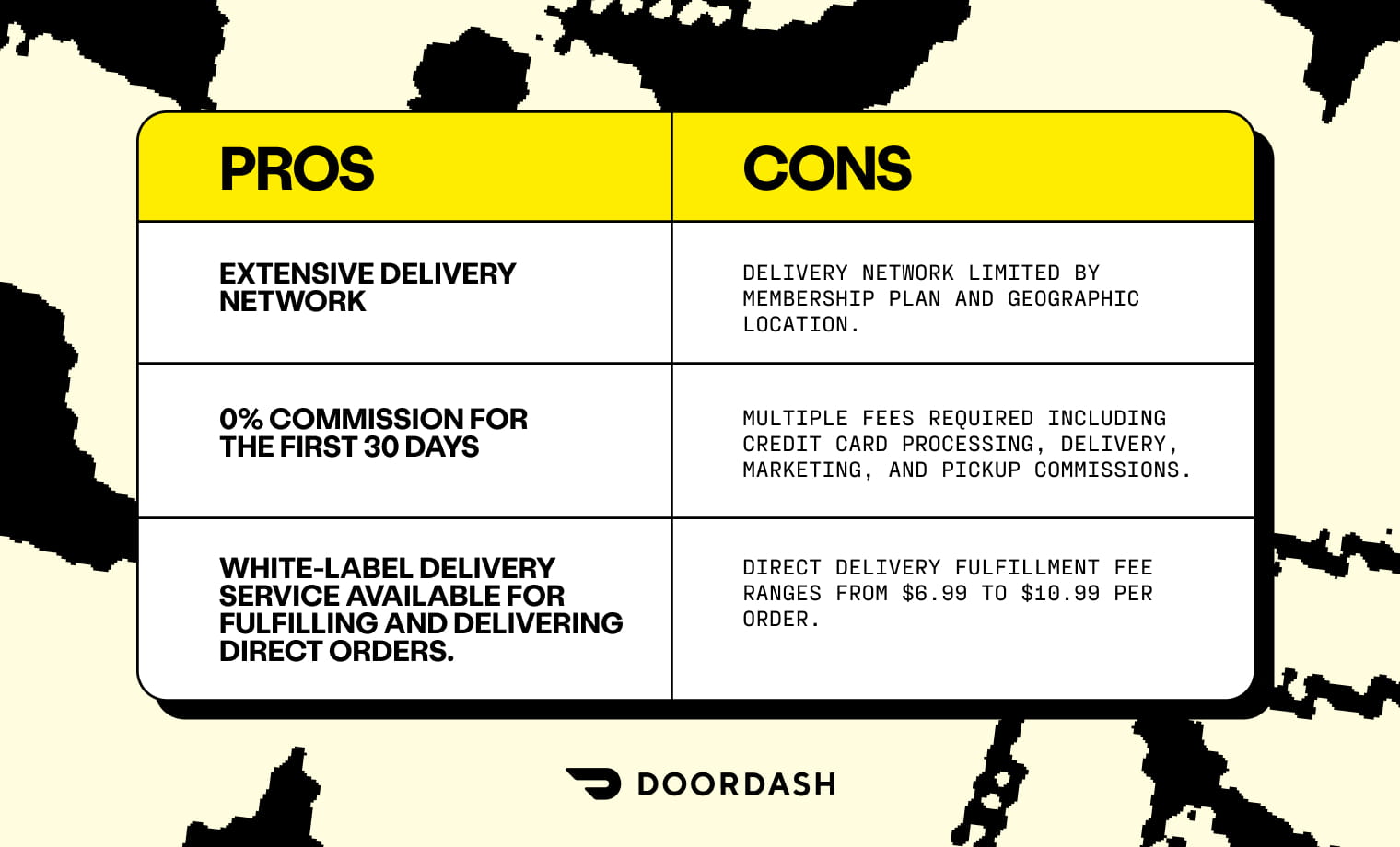
3. Grubhub: 15-30%.
Platform
With a customer base of 33 million diners around the globe, Grubhub currently holds 17% of the online food delivery market. The company also owns Seamless, Eat24, Foodler, and OrderUp.
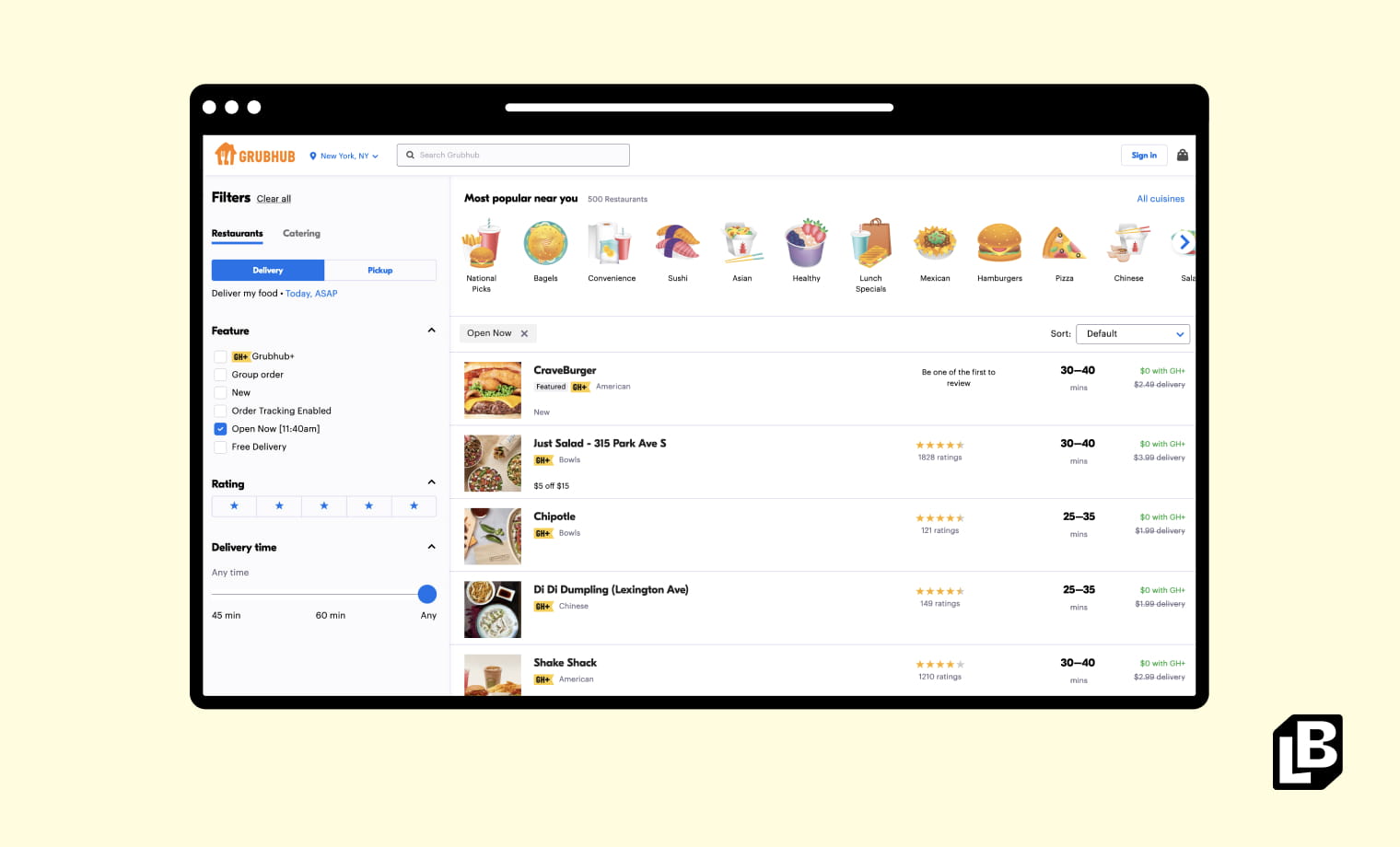
Source: Grubhub
Products
Following suit with the industry, Grubhub has expanded its service and product offerings beyond its initial Marketplace. Today, the company also provides:
POS Integrations — Merchants can choose to receive a free tablet to manage Grubhub orders from or integrate Grubhub’s platform with existing POS technology including Clover, Oracle Micros, Revel, Toast, and more.
Delivery Options — Restaurants have the option of handling deliveries internally (and forgoing delivery commissions) or relying on Grubhub’s fleet of drivers. Pickup options are also included.
Virtual Restaurants — Grubhub gives restaurants access to virtual kitchens through licensing opportunities. Restaurant partners can also partner with Grubhub to create a ghost kitchen concept from scratch.
Membership Pricing
Similar to DoorDash, Grubhub offers restaurants three pricing options:
Basic — Most expensive delivery fees. Includes everything necessary to get started on Grubhub’s Marketplace.
Plus — Everything in the Basic package, plus marketing and promotions tools to target Grubhub+ customers.
Premium — Least expensive delivery fees. Everything in the Plus package, as well as advanced tools for marketing, promotions, order management, and reviews.
It is important to note that Grubhub does not publicly list its commission fees. This is because the company uses several factors to determine a company’s commission fees, including the membership package purchased, a restaurant’s star rating, and competing local restaurants.
Additional fees incurred by Grubhub customers include:
Fees for canceling orders.
30¢ and 3.05% credit card processing fees.
20% marketing fees.
While Grubhub offers a profit calculator, it’s best to take these numbers with a grain of salt.
Pros & Cons
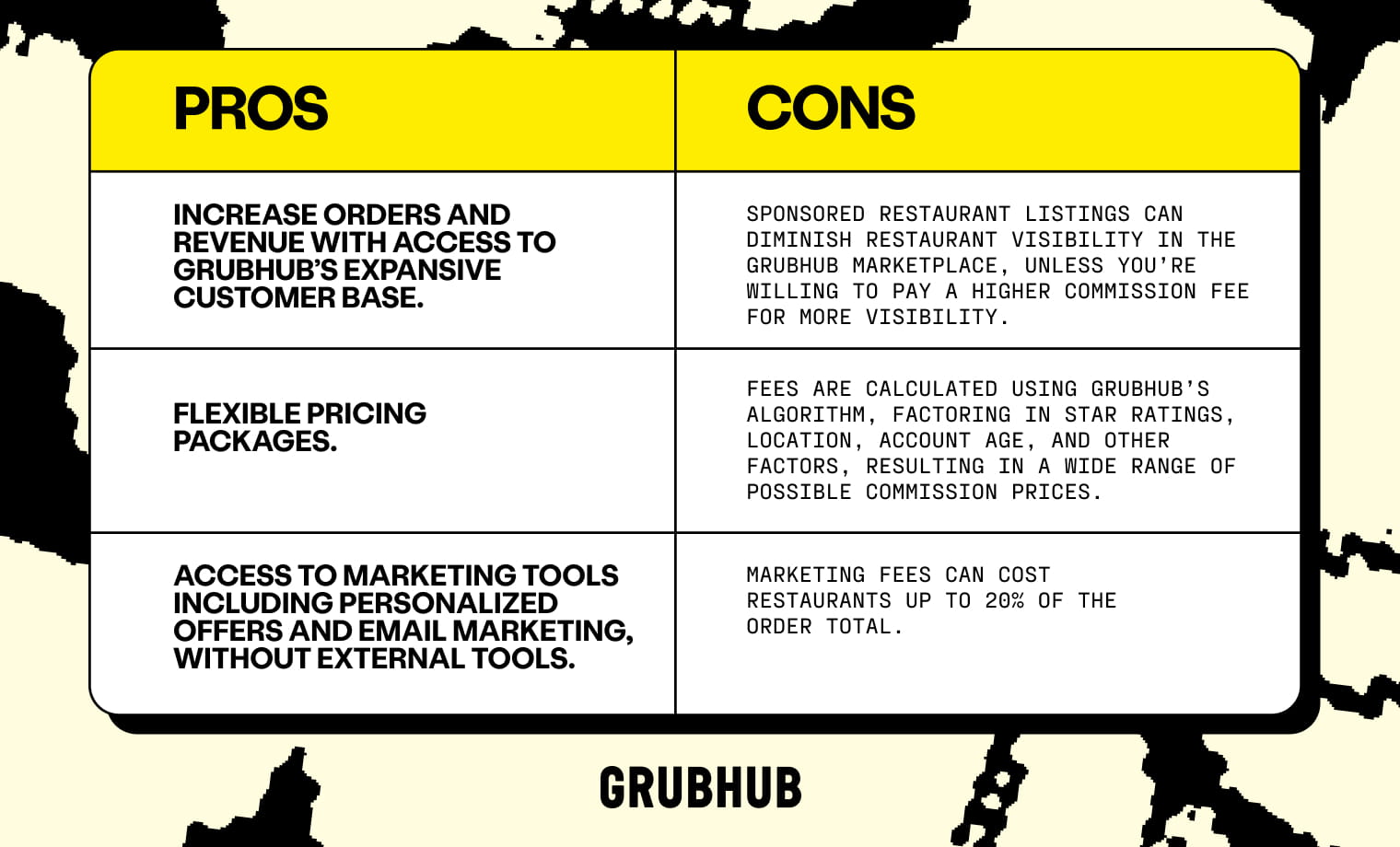
4. Uber Eats: 20-30%.
Platform
Uber Eats is the second most popular food delivery app among customers with 22% of the market share. Backed by Uber’s massive fleet of drivers, the Uber Eats platform was launched in 2014 and is now a staple in countries around the globe.
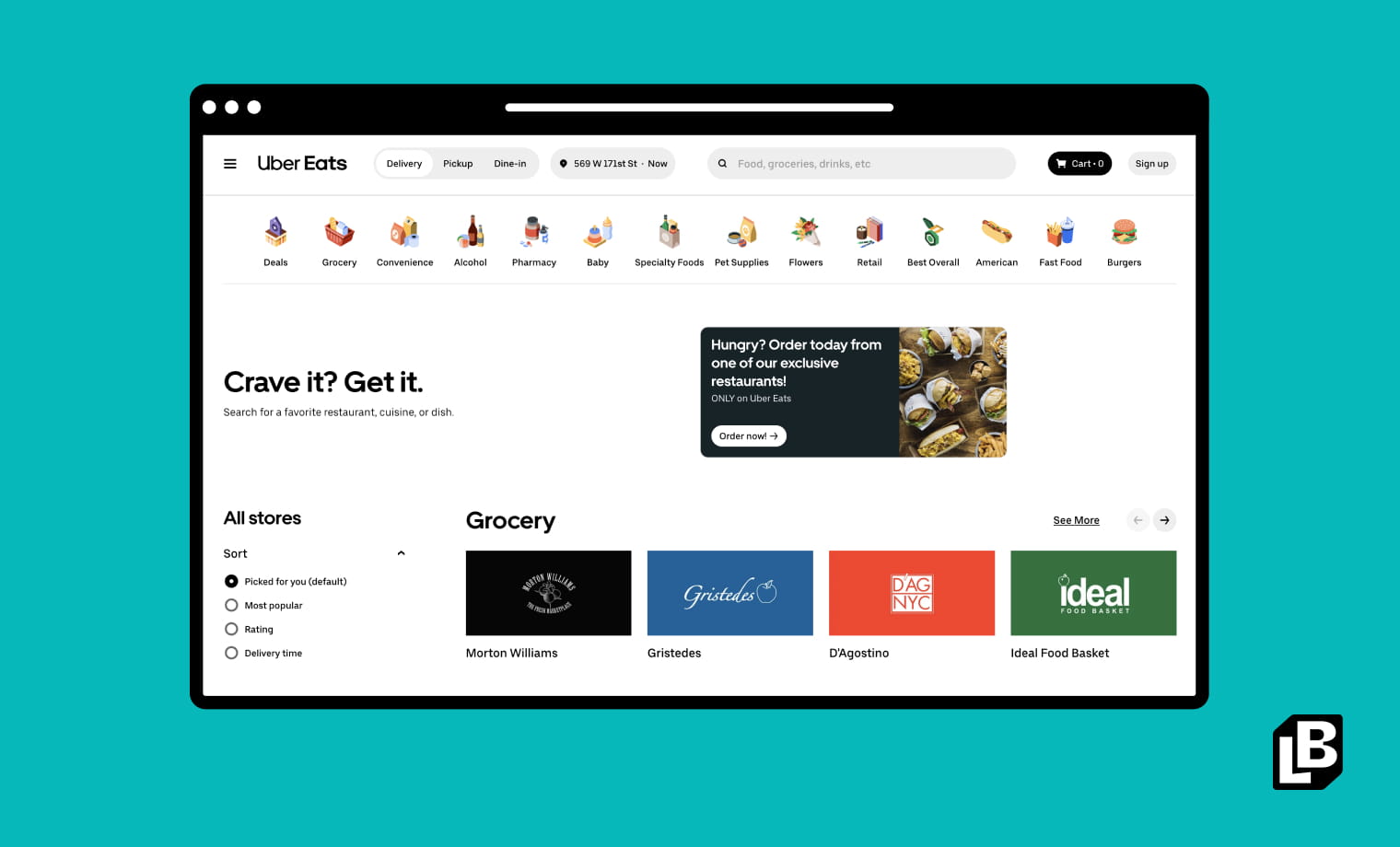
Products
Beyond food delivery through the Uber Eats app, the platform also offers:
Webshop — Customers can place Uber Eats delivery orders through a restaurant’s website. Orders placed online incur a 2.5% + 29¢ fee per order.
Delivery Options — Restaurants can choose to deliver orders with existing staff or rely on Uber’s fleet of drivers.
Uber Direct — Same-day delivery for retail businesses such as grocery stores and pharmacies.
Membership Pricing
Uber Eats gives restaurant owners three choices of pricing plans. All plans include delivery, pickup, order management, and support:
Lite — The lite plan is ideal for restaurants looking to offer delivery services to existing loyal customers. On this plan, restaurants are only visible to customers who search for the business by name. Commission fees are 15% for delivery orders and 6% for pickup.
Plus — Restaurants on this plan are visible via search and the home screen of the Uber Eats app. Commission fees are 25% for delivery orders and a 6% fee for pickup.
Premium — Uber Eats’ most expensive pricing plan places restaurants in ideal positions throughout the app, increasing visibility to new customers. Commission fees are the highest on this plan, with a 30% fee for delivery orders and 6% fee for pickup.
The third-party delivery platform also offers a suite of marketing tools and loyalty programs for an additional fee.
Pros & Cons
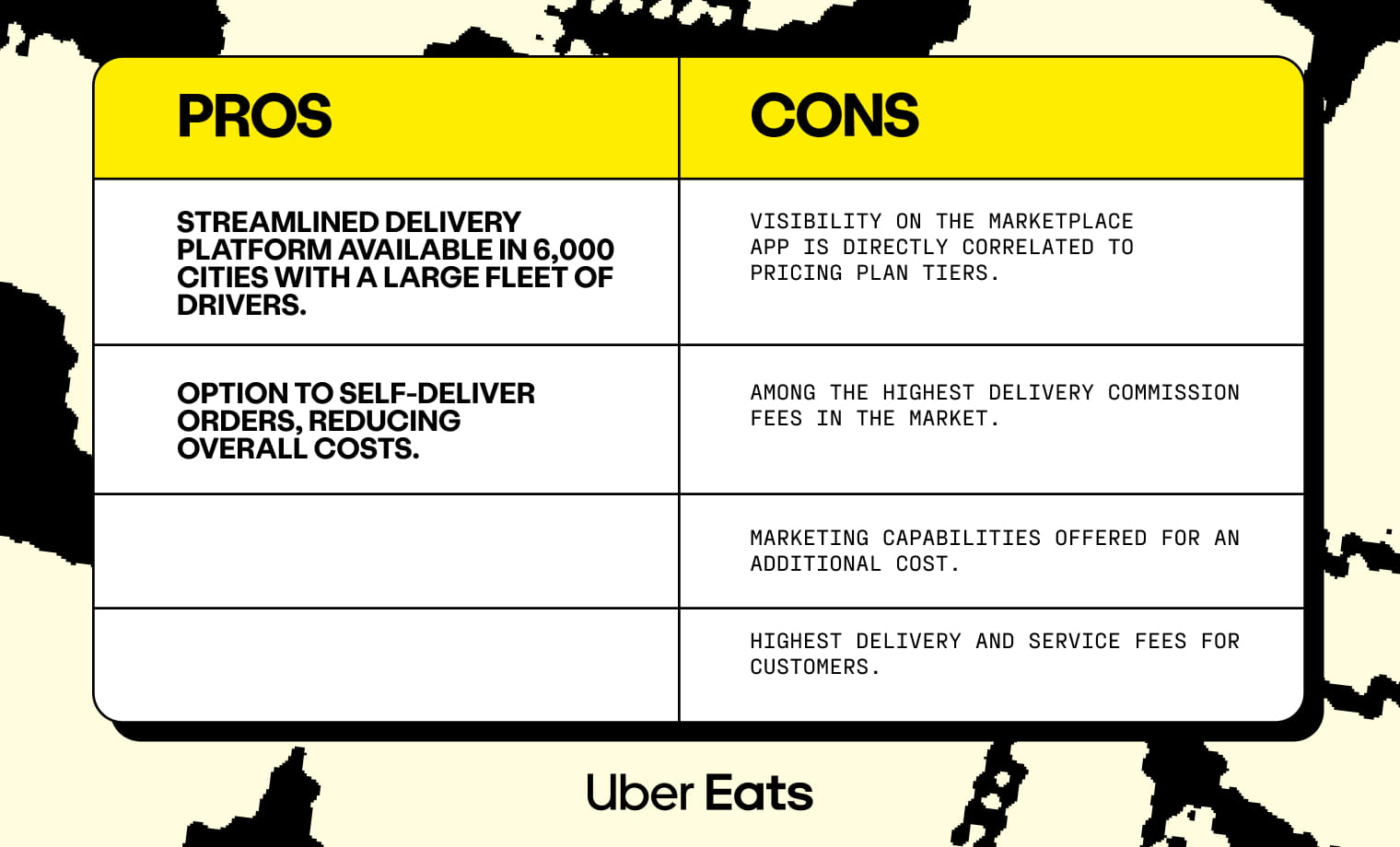
5. Postmates: 30%
Platform
After launching in 2011, Postmates grew to offer delivery services in all 50 states. In 2020, the company was acquired by Uber; it makes up approximately 5% of the market share to date. The platform’s small size and high commission fees place it among the least desirable third-party delivery apps for restaurants.
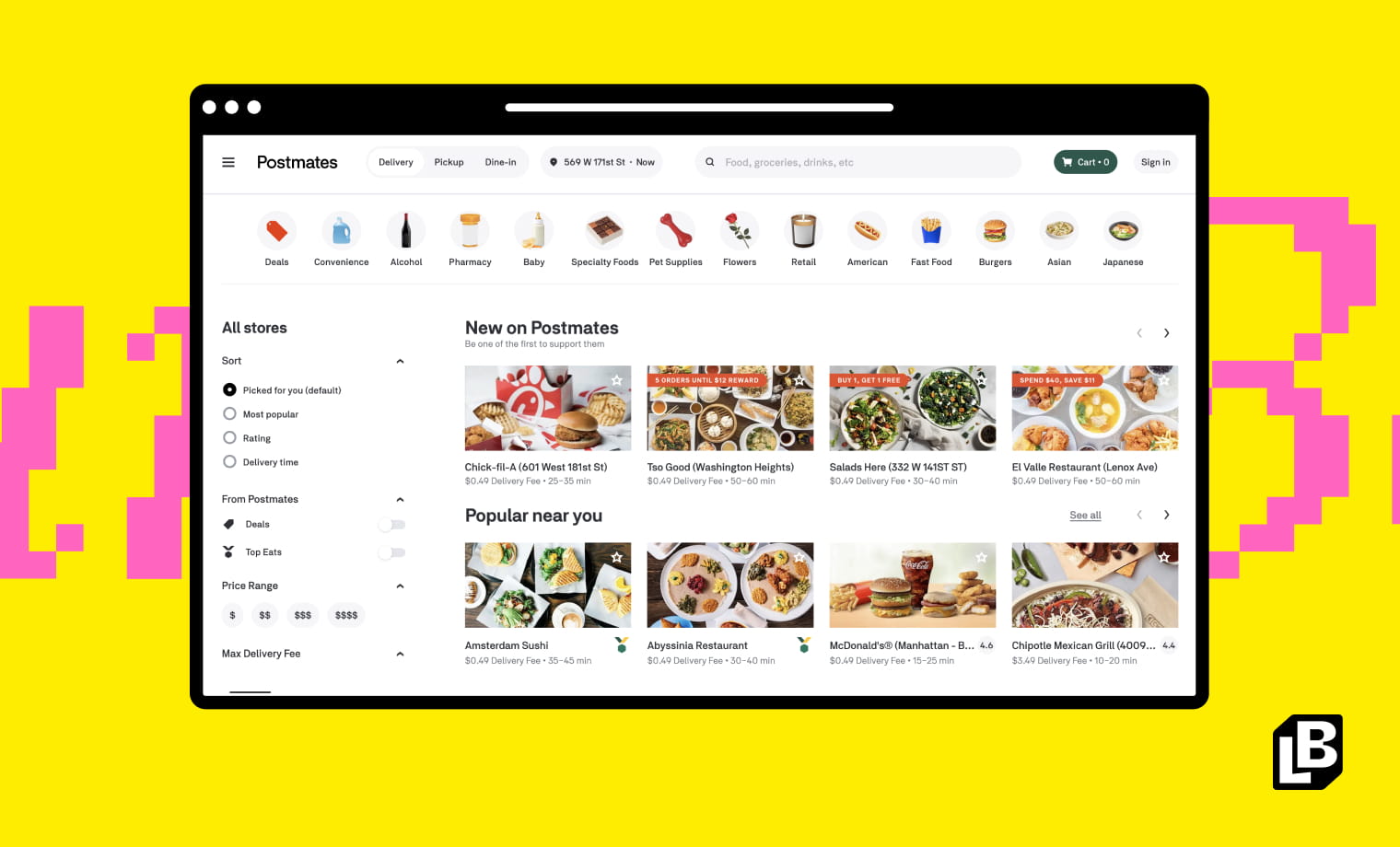
Source: Postmates
Products
Since Postmates is operated by its parent company, Uber, the products, services, and tiered pricing plans available are identical to Uber Eats.
Membership Pricing
Lite — 15% delivery commission, 6% pickup fee. Only visible to customers who search for the restaurant name.
Plus — 25% delivery commission, 6% pickup fee. Visible in Postmates search and home screen.
Premium — 30% delivery commission, 6% pickup fee. Visible in prime locations, such as the top of the home screen, as well as search and cuisine categories.
Pros & Cons
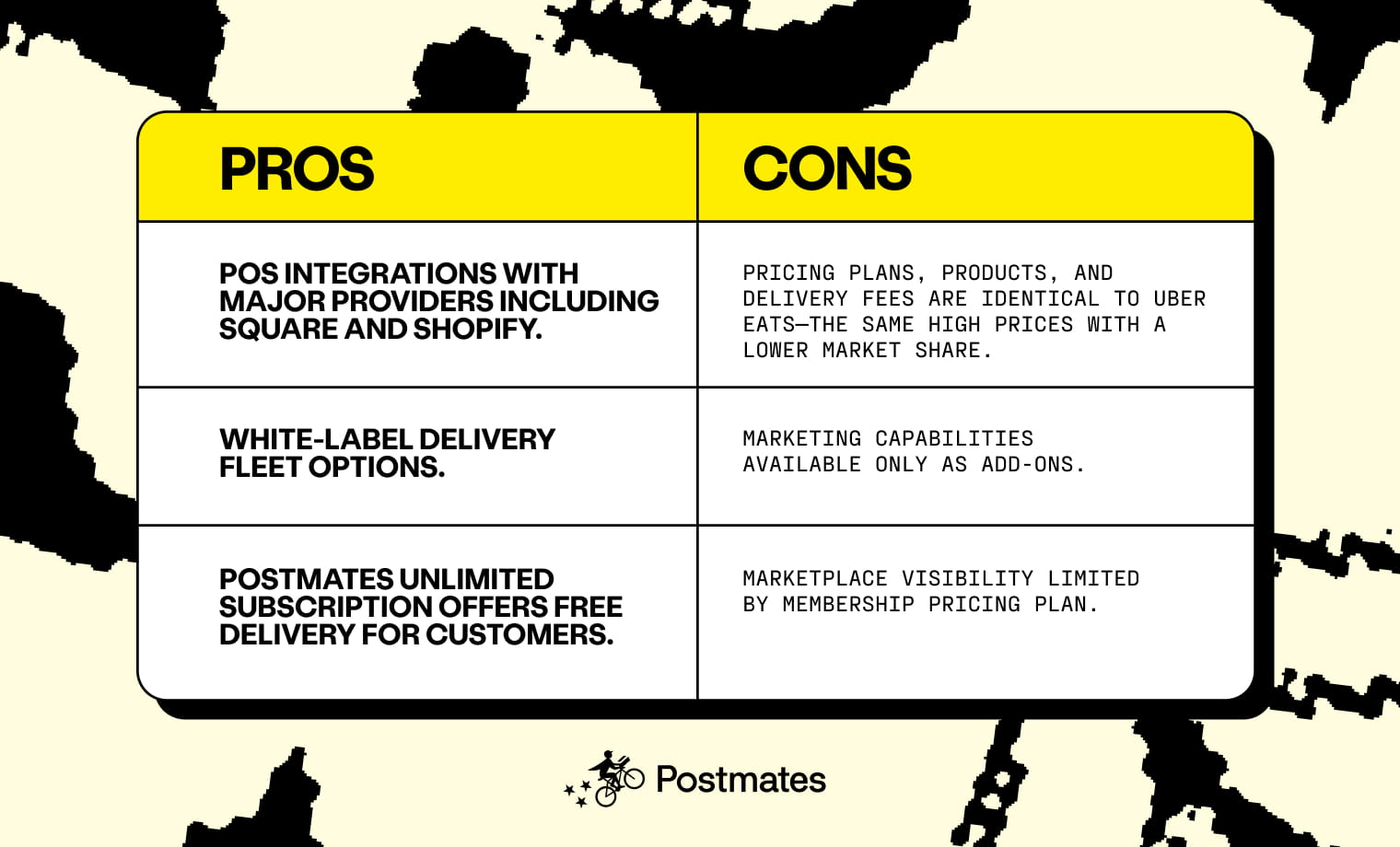
6. Caviar: 20-30%.
Platform
Caviar is unlike the typical third-party food delivery platforms. Caviar only partners with top restaurants in each city, creating an exclusive food delivery online marketplace.
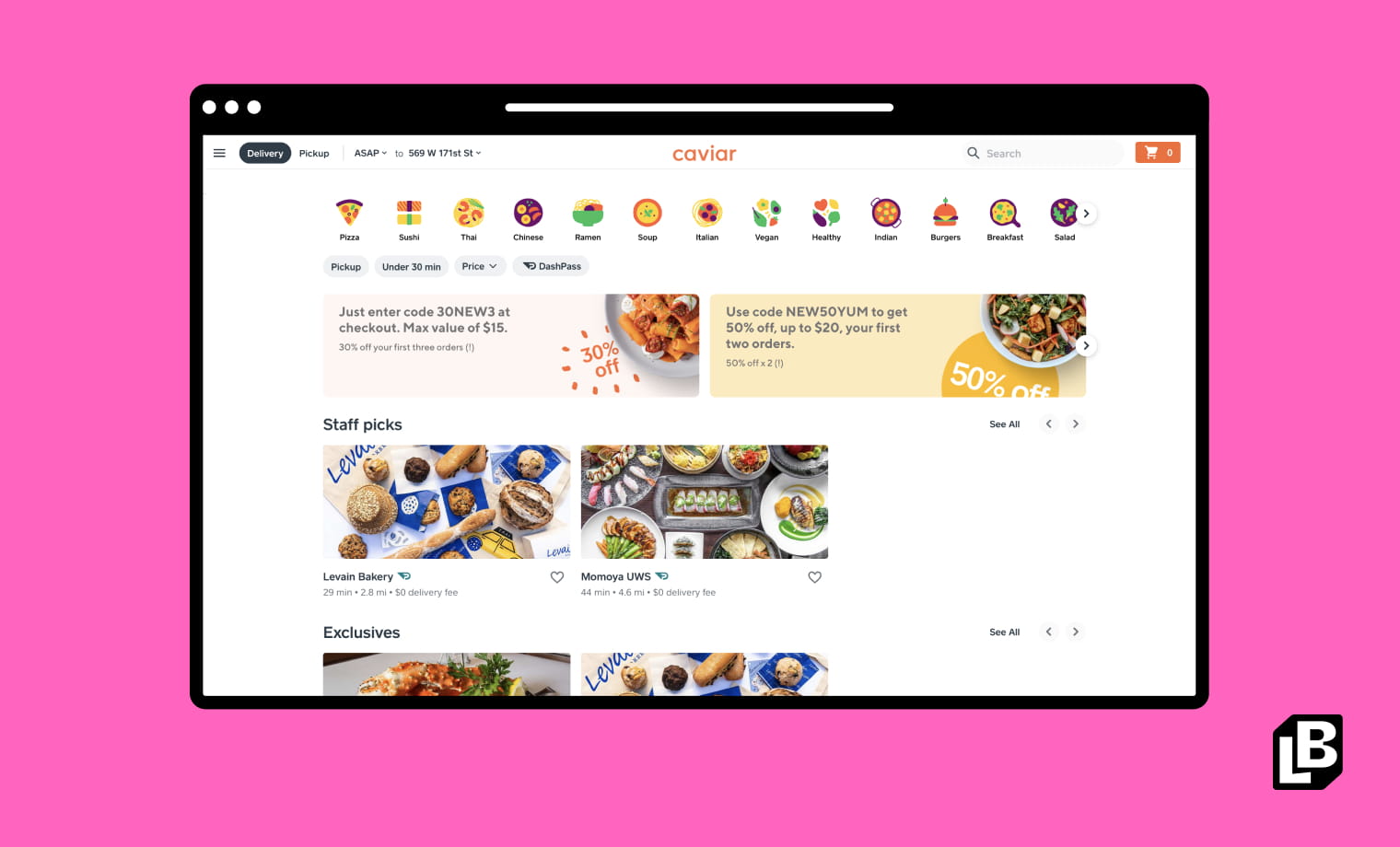
Source: Caviar
As Michelin’s official delivery app and a Zagat partner, Caviar provides its customers with access to upscale and top-of-the-line cuisine not available on other third-party platforms. This level of exclusivity leads to higher average order prices too, with Caviar diners spending 55% more than average third-party order values.
Caviar was acquired by DoorDash in 2020 and therefore boasts similar features, pricing plans, and add-ons.
Membership Pricing
After applying and being accepted to Caviar’s platform, restaurants use the DoorDash delivery system to fulfill, manage, and deliver food orders.
DoorDash offers three escalating plan levels with 15%, 25%, and 30% delivery commission fees respectively. Additionally, Caviar’s pickup fees or “finder’s fees” are the most expensive at 12%.
Pros & Cons
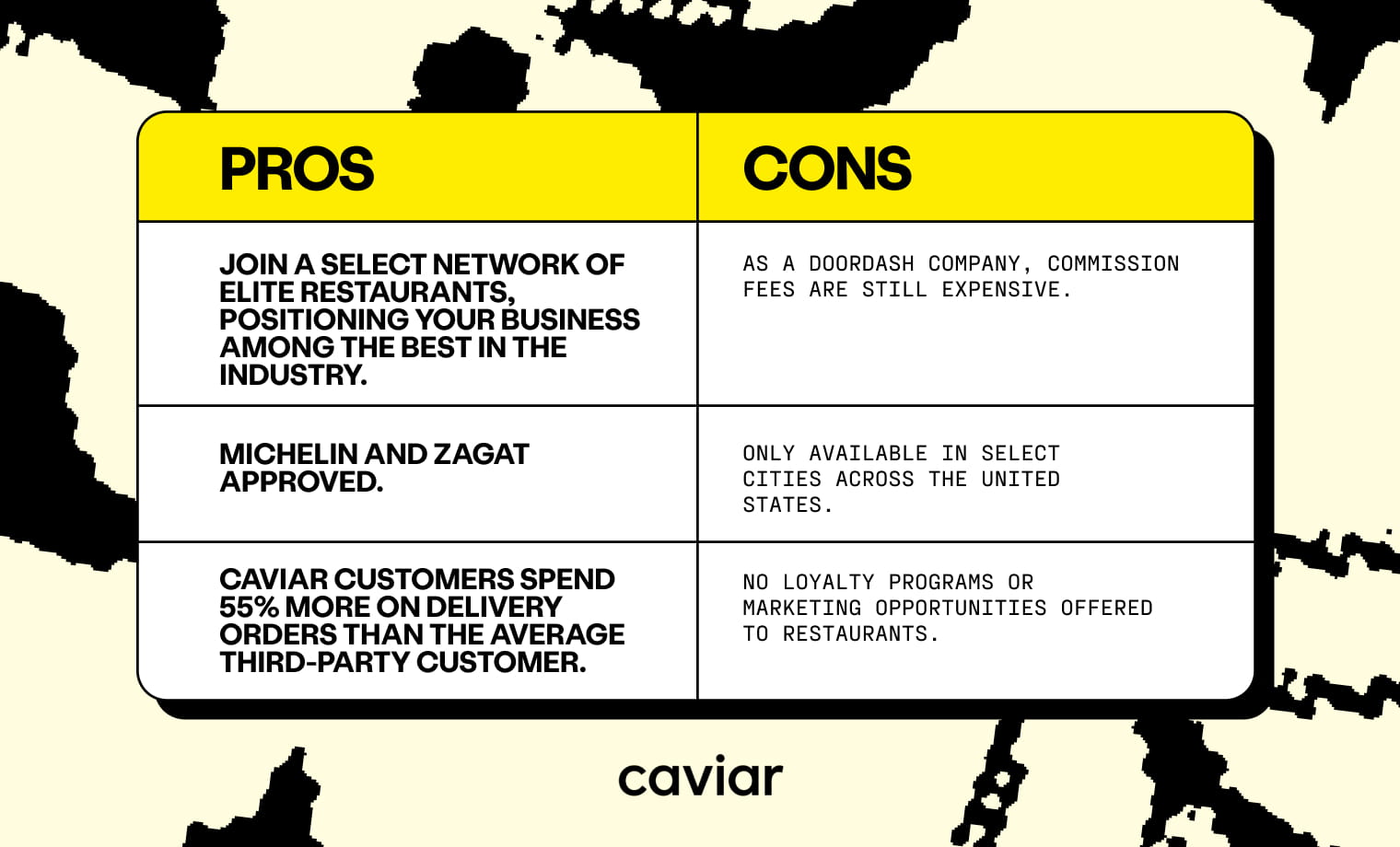
Regulations on Delivery App Fees Are Sweeping the Nation
In response to the COVID-19 pandemic, many third-party delivery apps waived delivery commissions and various customer fees. But this was only a temporary measure.
As stay-at-home mandates and indoor dining restrictions continued to be enforced, delivery commissions slowly but surely returned, nearly crushing restaurants’ abilities to operate sustainable businesses during a difficult time. Both local city councils and larger regulatory bodies around the United States took notice and began to draft bills in favor of delivery fee caps for restaurants and customers alike.
In Texas, Rep. Carl Sherman Sr. introduced H.B. 598 to the House, proposing a 15% cap on third-party platform delivery fees. In July 2021, the San Francisco Board of Supervisors voted to permanently cap delivery commissions to 15% per order. New York City followed suit soon after. Many of the bills also include a 5% cap on marketing and other extraneous fees.
The larger third-party apps are fighting the regulations, claiming the bills are unconstitutional. However, with consumer preference for ordering directly from restaurants and greater access to custom mobile apps, the era of third-party app tyranny may be coming to an end.
The Best Way to Beat High Delivery Company Fees? First-Party Orders.
Online ordering and delivery app fees can decimate a restaurant’s profit margins. The best way to avoid these fees is to drive first-party orders with a convenient, branded app.